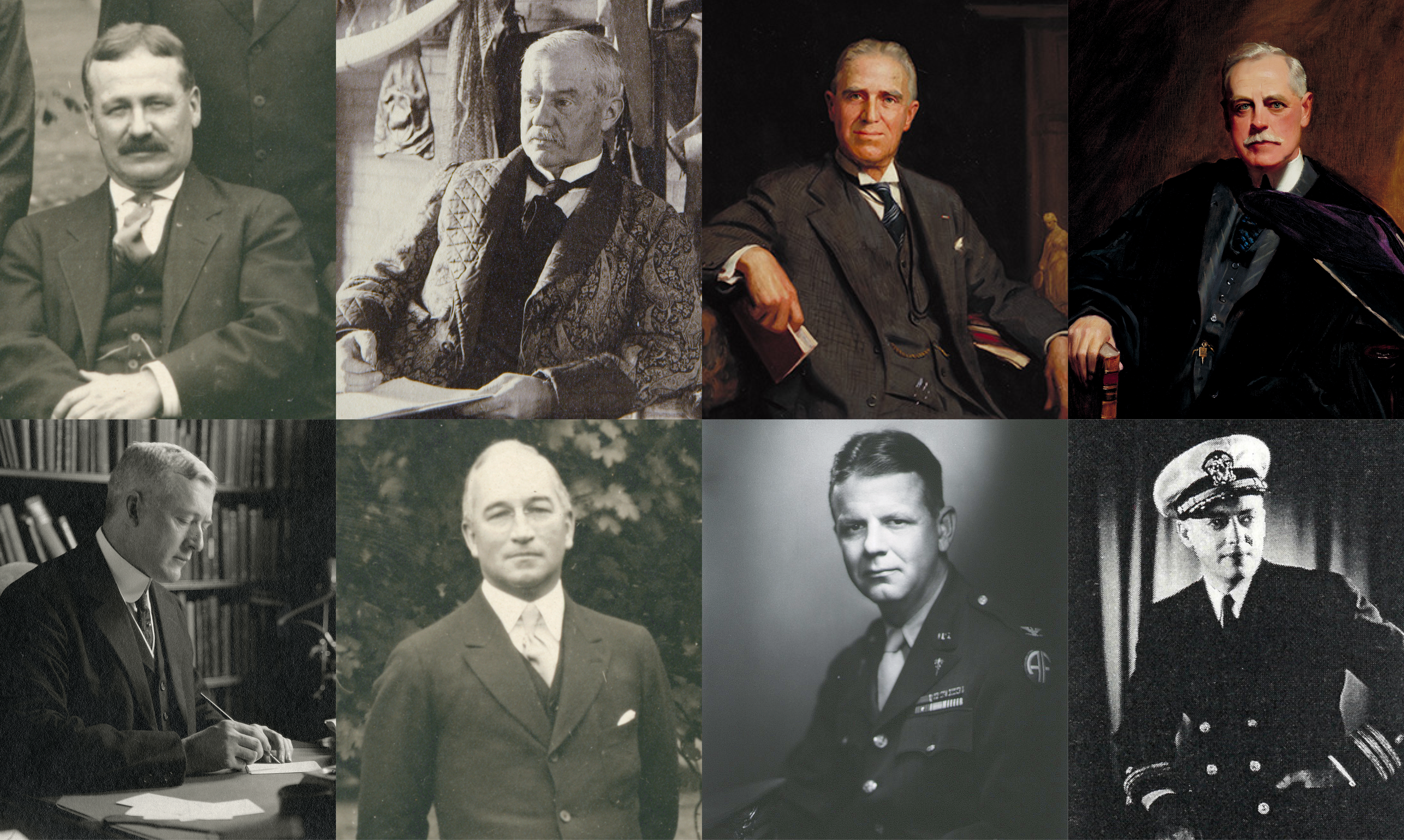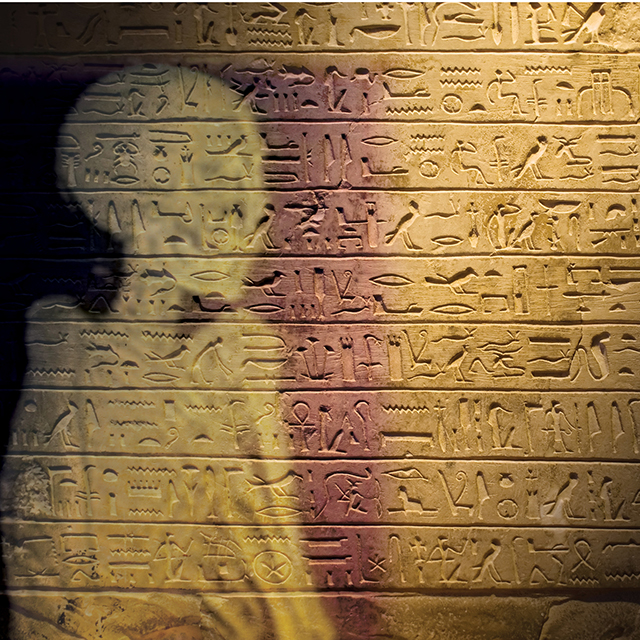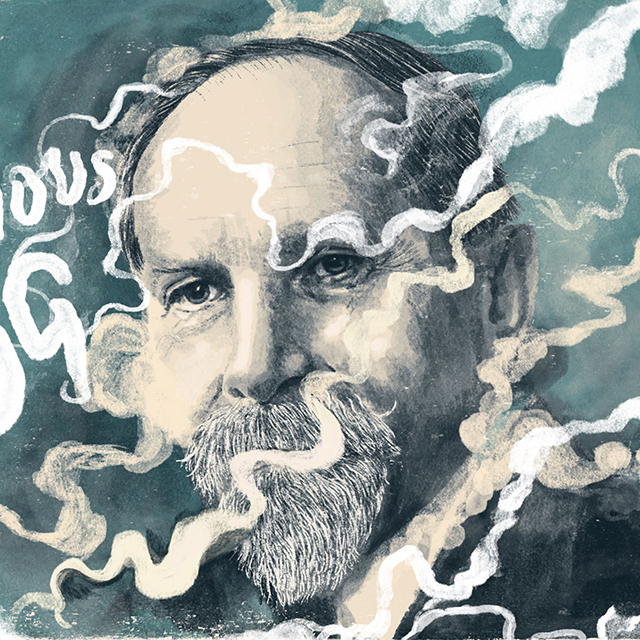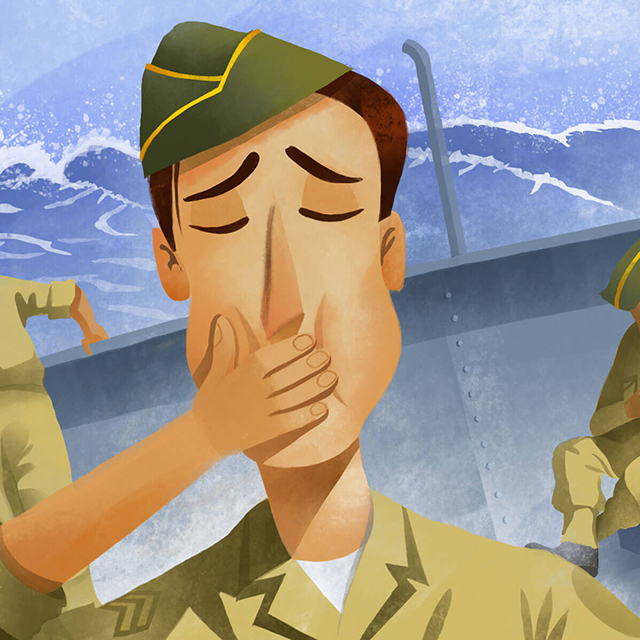In October, when Johns Hopkins pulmonologist Brian Garibaldi was asked to become part of the medical team treating President Trump for COVID-19, his name was added to a list of Hopkins-trained physicians or faculty who have been called upon for more than a century to treat presidents or members of their families.
Prior to Garibaldi, the most recent Johns Hopkins medicine experts to assist in the treatment of a president were radiologist Elias Zerhouni and ophthalmologist Harry A. Quigley.
In 1985, Zerhouni — then head of magnetic resonance imaging at Johns Hopkins and an internationally renowned expert on the use of MRIs — was asked to be a consultant on the case of President Ronald Reagan, who just had undergone an operation to remove cancerous polyps from his colon. George W. Bush later appointed Zerhouni head of the National Institutes of Health.
Beginning in 1990, Quigley, a 1971 graduate of the school of medicine and developer of the Glaucoma Division at the Wilmer Eye Institute, treated President George H.W. Bush on numerous occasions at the Bethesda Naval Hospital, now the Walter Reed National Military Medical Center.
Long before Zerhouni, Quigley and Garibaldi, who is the founder and head of Johns Hopkins’ biocontainment unit, a number of Hopkins physicians were the go-to specialists who have responded to requests from the White House for assistance.
J.M.T. Finney
John Miller Turpin Finney — known best by his first initials, J.M.T. — (1863–1942), was the top associate to William S. Halsted (1852–1922), Hopkins’ first surgeon-in-chief and director of the Department of Surgery.
In 1907, Theodore Roosevelt’s 23-year-old daughter, Alice Roosevelt Longworth, then married to Ohio Rep. Nicholas Longworth, came down with recurrent abdominal pains. Finney was asked to perform the required appendectomy — in the White House.
Operating equipment was set up in a large bedroom suite on the second floor of the White House. Finney later recalled that the president “was much interested in the preparations being made for the operation, but declined to be present while it was going on.”
On Dec. 12, 1907, Finney performed the operation. Alice Longworth, a colorful raconteur, later referred to it as having her “appendix plundered.”
“She made a prompt and uneventful recovery,” Finney recalled.
In 1922, Finney’s expertise would again be sought for the treatment of the chronic kidney woes of Warren G. Harding’s 62-year-old wife, Florence, and in 1924 in the case of 16-year-old Calvin Coolidge Jr., who had developed severe blood poisoning, then untreatable, due to an infected blister on his foot. Finney was on vacation and could not be reached. Other physicians attended young Coolidge, but the blood poisoning took his life.
Howard A. Kelly and William S. Thayer
President William Howard Taft (1857–1930) was friendly with all four of the founding physicians of The Johns Hopkins Hospital and medical school — William Osler (1849–1919), William Henry Welch (1850–1930), William S. Halsted and Howard A. Kelly (1852–1943) — having met them at various banquets and other social events before and during his presidency (1909–1913).
Mostly on behalf of family members, Taft sought medical advice from Kelly, founding head of Johns Hopkins gynecology, who was renowned for his surgical skills; William S. Thayer (1864–1932), who became head of the Department of Medicine; ophthalmologist William H. Wilmer (1863–1936), who was Taft’s eye doctor; and pioneering brain surgeon Harvey Cushing (1869–1939).
Taft was the heaviest president in U.S. history. Standing 5 feet, 11 inches tall, he weighed between 335 and 340 pounds during his term in office. His morbid obesity naturally led to physical problems, including sleep apnea, gout and urinary tract infections.
After his presidency, Taft — who also served as Chief Justice of the United States from 1921 to 1930 — asked Thayer to be his cardiologist.
William H. Wilmer
Before coming to Johns Hopkins in 1925 as the first director of the Wilmer Eye Institute, William H. Wilmer had been the preeminent ophthalmologist in Washington, D.C. He counted not only William Howard Taft as a patient but also seven other presidents, from William McKinley to Franklin D. Roosevelt. They all sat in Wilmer’s examination chair — later dubbed “the presidents’ chair.” It now is on display in the Wilmer Eye Institute.
Lewellys F. Barker
Barker (1867–1943) succeeded Osler as director of the Department of Medicine in 1905. When President Taft’s 48-year-old wife, Helen, suffered a stroke in 1909, Baker was asked to help her regain the ability to speak. His visits to the White House were kept secret.
Hugh Hampton Young
The founding head of the James Buchanan Brady Urological Institute, Young (1870–1945) was summoned to the White House after 62-year-old Woodrow Wilson suffered a severe stroke in October 1919. Wilson had been plagued by problems urinating even before his stroke, but afterward his retention of urine led to urinary sepsis. Young’s advice was sought, but ultimately, nature took its course and Wilson’s bladder emptied spontaneously without the need for medical intervention.
Perrin H. Long
In late 1936, Perrin H. Long (1899–1965), Johns Hopkins’ pioneer in the use of antibacterial medications known as sulfonamide (sulfa) drugs, received a telephone call. The caller said she was First Lady Eleanor Roosevelt (1884–1962). Long, thinking it was a prank, hung up. Moments later, when the phone rang again, he realized that the caller was Eleanor Roosevelt. She said that her 22-year-old son, Franklin D. Roosevelt Jr., was seriously ill with a deadly streptococcal infection. Mrs. Roosevelt said she had learned of Long’s work with powerful antibacterial drugs and hoped that he could use them to save her son’s life.
Long did. He used prontosil to cure FDR Jr. — a success reported in The New York Times and elsewhere.
Howard G. Bruenn
A 1929 graduate of the Johns Hopkins school of medicine, Howard G. Bruenn (1905–1995) was a lieutenant commander in the Navy and chief of cardiology at Bethesda Naval Hospital in March 1944, when he was summoned by Vice Adm. Ross T. McIntire, the chief White House physician, to examine President Franklin D. Roosevelt, then 62. McIntire, an otolaryngologist, was concerned about FDR’s apparent decline in health.
Bruenn was shocked to discover that Roosevelt was suffering dangerously high blood pressure — a condition then untreatable by medication — and congestive heart failure. McIntire assigned Bruenn to be FDR’s personal cardiologist, which required that he provide daily care for the president’s condition wherever he went.
Bruenn remained FDR’s personal physician until the president died of a cerebral hemorrhage on April 12, 1945.



